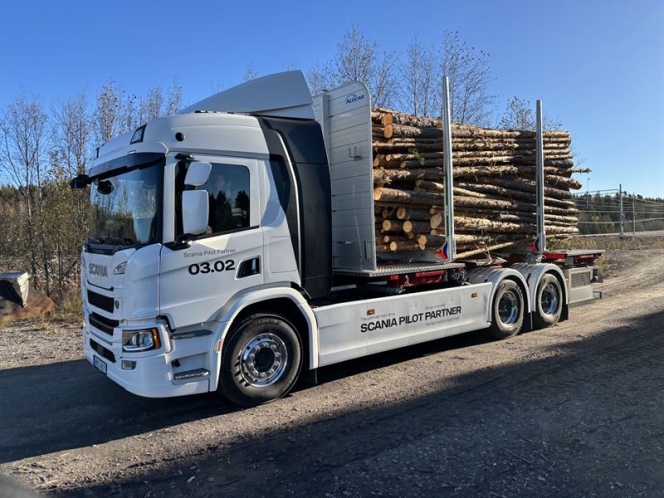Mapping Need For Efficient Water Management
- By Amit Vaidya
- January 06, 2021

India, which houses four percent of the world’s water resources and 18 percent of the world’s population, ranks 13th among the 17 worst affected countries in Aqueduct 3.0 Country Rankings 2019 lists. It is the world’s biggest extractor of groundwater — more than China and the US combined — accounting for almost a quarter of the total extracted globally. Between 2000 and 2017 its groundwater depletion increased by as much as 23 percent. Generally, the annual per capita water availability of less than 1,700 cubic meters is considered a water-stressed condition. If this number is below 1,000 cubic meters, it is regarded as a water scarcity condition. Its highly alarming that for India, the utilisable per capita water availability which stood at 938 cubic meters in 2010 is expected to drop to 814 cubic meters by 2025, says National Institute of Hydrology.
About 200,000 Indians die every year due to inadequate access to safe water and 600 million face high to extreme water stress, as reported by NITI Aayog. The groundwater resources that account for 40 percent of India’s water supply are being depleted at unsustainable rates directing the need to adopt efficient water management measures in both residential and industrial areas. Nearly 163 million of India’s population of 1.3 billion lack access to clean water close to home, according to a report by WaterAid. Given this scenario, it is incumbent upon both the Government and the citizens, to find ways to address and avert the crisis.
Excessive Industrial water consumption
The world’s population is expected to expand by another 40-50% over the next 50 years (Source: World Water Council). Currently, India’s industrial sector is already the second-highest consumer of water, and their current usage in India is about 13 percent of the total freshwater withdrawal in the country. This water demand for industrial uses and energy production is expected to grow at a rate of 4.2 percent per year, rising from 67 billion cubic metres in 1999 to 228 billion cubic metres by 2025. Here, it’s critical to note that industrial water demand is not negligible in India and that it is bound to grow in the coming years. Experts opine that poor water pricing is one of the main reasons for its inefficient use by the industrial sector. It’s essential that for a water-stressed country like India, the efficiency of utilisation in all the industrial uses of water should be optimised and an awareness of water as a scarce resource should be fostered. The key to the problem lies in the effective management of the water through the deployment of tech advanced smart meters that allow real-time insights to be drawn and acted upon immediately.

Automotive Industry
Efficient water management is becoming an increasingly important issue in sustainable vehicle manufacturing. The automotive industry is one of the major consumers of water, and according to some estimates, over 40,000 gallons of water is used in the process of manufacturing a car. In the automobile assembly lines, water is used throughout a variety of process and production stages where vehicles are treated, washed, rinsed and painted.
The Indian automobile industry is expected to reach $300 Bn by 2026 at a CAGR of 15 percent. It is vital to deploy advanced smart water management technologies to track and reduce process water usage. The technology roadmap for energy reduction in automotive manufacturing should have smart water meter deployment as a key point. These would help manufacturers understand the water usage pattern and make informed decisions to use it more judiciously, thereby reducing the overall energy usage and cost factor.
Since water is used in nearly every stage of the auto manufacturing process in the automotive industry, concerns must be raised around how these plants can reduce global water use significantly. The most conducive solution would be deploying smart water metering solutions due to a number of benefits that they have to offer:
Power bank of Information/data log- Valuable statistical data and information about the water volume and flow, temperature, pressure information is stored and available in the integrated data loggers. These non-invasive temperature readings and optional integrated pressure measurement help network operators to maintain water quality and balance pressure levels in their pipe network.
Lifetime Maintenance-free with long-term battery life- With more than ten years of battery life and in-built static technologies, some static water meters solutions are maintenance-free over its entire operational lifetime.
Improved and better performance- Consumption patterns of commercial and industrial customers often involve fluctuations between low flow rates and continuously high flow rates. These smart meters are designed to be extra sensitive both at high and low flow rates so the alarm can be raised quickly and efficiently in case of pipe burst/ leakage/reverse flow/tampering attempts.
Interestingly, many of the large automobile players have understood the risk of undue water usage. Water management has started to become a top priority in manufacturing plants for them. The OEMs and associated automotive suppliers globally are constantly introducing and expanding methods to conserve water.
Government Initiatives
Governments and regulatory bodies are looking to encourage smarter systems, greener environmental standards and demanding cost targets to restrict the impact on their citizens. Smart water networks, energy reduction targets, a growing population and the effects of climate change are driving new business models and regulatory demands for the Government nowadays. Remote data collection and exchange is growing exponentially and long-established methods and practices are being relooked at – which is offering immense opportunities to utilities to drive operational efficiency. Smart water management, as outlined above, helps the Government, cities & water utilities to improve their infrastructure and enhance the quality of customer service/engagement.
Smart water meter application in industries will help water companies improve customer experience by providing instant, accurate information on everything from billing to queries about service, as and when it’s needed. Providing more data would mean enabling more contact with the customer, fostering a closer relationship.
Road Ahead
Right now, water conservation needs to be a strategic priority for vehicle manufacturers. Considering a majority of areas that operate in are water-stressed, eliminating potable water use to the maximum extent, should be the main motto. Both automobile assembly plants and parts manufacturers need to come forward and adopt water management infrastructure within their processing plants to increase water usage efficiency and minimise discharge volumes. Changing the water footprint of car manufacturers is important.
Water is shaping up to be a serious economic risk in Asia’s third-largest economy. Desertification, land degradation and drought cost India about 2.54 percent of the gross domestic product in 2014-15, according to an India’s environment ministry study. Another global survey of miners in 2018 (CDP), stated that water-related problems such as droughts, increased water stress, and flooding would necessitate a financial impact worth USD 11.8 billion over the next five years. Smart water meters can help India win the water crisis battle faster. The smart water meter market in India is forecast to grow at a CAGR of 14.7 percent during 2019-2025 as per Frost & Sullivan Report.
While the Government have been making significant efforts to make India the best water management nation in the world, the need to work towards a digital, smart and resilient water economy to enhance the water management system– is vital! (MT)
NB: Amit Vaidya is Director, India – Metrology Business, Sensus; views expressed are personal
Battery Passport Implementation Beyond EVs To Be Focus Of Barcelona Event
- By MT Bureau
- December 03, 2025

Battery and Energy Storage Europe has announced a programme focused on the EU Battery Passport, a regulatory milestone that becomes mandatory in February 2027. The Barcelona-based event will address the compliance gap for applications beyond the electric vehicle (EV) sector, which have dominated the conversation to date.
The event, taking place on 8th and 9th September 2026 at Fira de Barcelona's Gran Via venue, will focus on solutions and talks for applications that fall within the regulation's scope: stationary energy storage, industrial batteries, grid-scale systems, long-duration energy storage and emerging applications in aerospace, maritime and rail electrification.
With the February 2027 legal requirement date approaching, the programme will bring together industry leaders, technology providers, and policy experts to address the compliance challenges facing these diverse sectors.
The Battery Passport is a digital record documenting a battery's entire lifecycle, from raw material sourcing to production, performance and eventual recycling. From February 2027, it becomes mandatory for all rechargeable EV, industrial and LMT batteries over 2 kWh sold in the EU.
Linked via QR code, the passport will track each battery's complete lifecycle, including composition, carbon footprint and recycled content, fundamentally transforming supply chain transparency and sustainability practices across Europe.
The programme will explore implementation topics including digital infrastructure requirements, data management systems, supply chain integration, verification processes and recycling traceability.
Ken Davies, Conference Programme Director at Battery and Energy Storage Europe, said, "The Battery Passport represents one of the most significant regulatory shifts our industry has faced, yet many companies are still grappling with what implementation actually means for their operations. While the EV sector has dominated the conversation, there's a critical need to address how this regulation applies to stationary storage, industrial applications and the innovative battery technologies powering Europe's energy transition. With the clock ticking toward February 2027, Battery and Energy Storage Europe will shine a light on the practical implementation requirements for these often-overlooked sectors, connecting stakeholders with actionable solutions and bringing together the expertise, technology providers, and collaborative spirit needed to turn compliance into competitive advantage across the full spectrum of battery applications."
- Scania
- Horse Powertrain
- SCA
- hybrid truck
- Aurobay Technologies
- Matias Giannini
- Tony Sandberg
- Ingo Scholten
Scania Selects Horse Powertrain For Range-Extender Truck Pilot In Sweden
- By MT Bureau
- December 03, 2025

Horse Powertrain has been selected by Scania to provide its range-extender system for a pilot vehicle, currently operating as a heavy-duty timber truck in Sweden. The collaboration is a step in testing hybrid powertrain solutions for demanding transport applications such as forestry logistics.
The pilot is part of the Scania Pilot Partner program and is currently operating in Sweden under SCA, one of Europe’s forestry companies.
The vehicle is built to handle Sweden’s timber routes, transporting heavy loads through remote terrain where access to charging infrastructure remains scarce. By combining a battery-electric drivetrain with the generator designed in Sweden by Horse Powertrain’s division Aurobay Technologies, the truck achieves both long-distance capability and reduced CO2 emissions.
The test route covers approximately 16 km, with an operational target of completing 7–8 rounds per day, comparable to a diesel truck.
The configuration supports the truck’s battery packs with a 120 kW range-extender unit based on Horse Powertrain’s 2.0 litre multi-fuel engine. Acting purely as an onboard charger, the unit supplies electric energy when required during long hauls, temperature extremes, or delays.
Matias Giannini, CEO, Horse Powertrain, said, "Forestry logistics represents one of the toughest challenges for electrification. The forest roads of northern Sweden demand strength, range and reliability. Charging stations are few, but the timber never waits. You can think of our range-extender as a powerbank for a heavy-duty truck: silent, efficient, and always there when you need it. By partnering with Scania and drawing on our engineering excellence, we’re proving how a compact, high-efficiency range-extender enables electric trucks to operate reliably in the most demanding environments. It’s a technology that cuts CO2 now.”
Tony Sandberg, Vice-President at Scania Pilot Partner, added, "What we’re doing in Sweden with Horse Powertrain and SCA builds directly on the 100-day trial we ran together with a logistics partner in Germany earlier this year. That vehicle logged almost 22,000 kilometres and drove more than 90 percent of the time on pure electric power, only using the range-extender when no charging was available. The result was a CO2 reduction of over 90 percent compared with a diesel truck. Those learnings give us a strong foundation as we tailor the system for demanding Nordic timber operations."
Ingo Scholten, Chief Technology Officer, Horse Powertrain and Managing Director Sweden, Aurobay Technologies division, said, “Electrifying heavy-duty routes means understanding what drivers and operators face hour by hour. Long stretches without charging, variable loads and rapidly changing weather. This pilot lets us study those realities directly in day-to-day timber operations. The range-extender’s role is simple. Provide a stable, efficient energy supply so drivers can complete their full shift without interruption and with far lower greenhouse-gas emissions than a traditional diesel truck. The data we gather here will guide how we refine the technology and scale it for wider use across demanding transport applications.”
Horse Powertrain’s modular range-extender architecture builds on the core technology used in its passenger-car and light-commercial hybrid systems, adapted for the higher power output and durability demands of heavy-duty applications. Unlike conventional fixed-speed generator sets, the engine can operate across its full power band, allowing the system to deliver the required output efficiently while keeping fuel consumption, noise and vibration low.
The pilot truck is now undergoing testing in regular operations, carrying full timber loads to gather performance and efficiency data in real-world conditions. The results will guide future deployments of electrified powertrains in the forestry sector and other heavy-duty applications.
Maruti Suzuki Launches One India, One EV Charging Platform
- By MT Bureau
- December 03, 2025
Maruti Suzuki India, the country’s largest passenger vehicle maker, is gearing up to mark its entry into the electric vehicle segment with the soon-to-be-introduced e Vitara has announced an EV ecosystem with a comprehensive end-to-end digital platform for charging needs, including home and public charging, with an integrated payment journey.
The company has signed collaboration agreements with 13 Charge Point Operators (CPOs) and aggregators to provide seamless charging experiences on a single platform.
Maruti Suzuki has established a network of over 2,000 exclusive charging points across its nationwide dealer network, spanning more than 1,100 cities. Customers’ charging needs are further supported by the extensive partner-operated all-India charging network.
Aligned with its global vision, Maruti Suzuki will work with its partners to enable more than 100,000 Public Charging Points by 2030.
Hisashi Takeuchi, Managing Director & CEO, Maruti Suzuki India, said, “At Maruti Suzuki, we strive to extend a delightful ownership experience to our customers to build lasting trust. Today, we are taking a historic step, as we enter the domain of electric mobility with full readiness to address the EV charging concerns and boost customer confidence. We have established a robust network of over 2,000 Maruti Suzuki exclusive charging points across our sales and service network, spanning more than 1,100 cities. Further, we have collaborated with 13 Charge Point Operators to offer access to a vast charging infrastructure across the country. Aligned with Suzuki’s global vision, we plan to introduce multiple EVs and to support this, our aim is to enable a network of over 1 lakh charging points across India by 2030, along with our Dealer and CPO partners.”
'E for Me' Digital Platform
The Maruti Suzuki ‘e for me’ EV charging mobile app enables end-to-end usage of EV charging points from partner-operated charging points and Maruti Suzuki’s own network on a single platform.
The app offers a uniform customer journey for EV charging and payment through UPI or exclusive ‘Maruti Suzuki Money’, powered by Razorpay.
The platform's functions include:
- Locate, Pay & Use EV charging points available on the app.
- Use Public and Smart Home Charger from the same app.
- One card for ‘Tap N Charge’ functionality at Maruti Suzuki dealer outlets and home charger.
- Mirror e for me app on the infotainment system for seamless in-car EV charging experience.
- Remotely start/stop and manage the power output of the smart home charger.
Partho Banerjee, Senior Executive Officer, Marketing & Sales, Maruti Suzuki India, said, “Today is the dawn of a new era for electric mobility in India. It gives me immense pleasure to say that Maruti Suzuki is EV ready and will be ‘By Your Side’ with our comprehensive new platform that addresses key concerns around EV charging infrastructure. Leveraging India’s largest dealer network and our charging partners’ network, we are ensuring there are EV charging points at an average distance of 5-10 kilometres at key locations in the top 100 cities of India. DC fast chargers are also located at regular intervals along key highways to enable nationwide driving freedom for our prospective EV customers. To further enhance peace of mind, we have deployed a 1.5 lakh-strong specially-trained EV workforce to cater to every need of our customers. We have also activated 1500+ EV-ready service workshops across 1100 cities for meeting after-sales requirements to support EV ownership in every part of the country.”
To showcase the network readiness, four e VITARAs were flagged off from Gurugram in all four directions – Srinagar (North), Kanyakumari (South), Bhuj (West) and Dibrugarh (East) – as a part of the ‘e drive’.
The e Vitara Born EV, which is ‘Made-in-India and exported around the world,’ has been rigorously tested over 10 million test kilometres. Tested from ‘Sand to Snow’ over a temperature spectrum of 60deg Celsius to -30deg Celsius, the e Vitara has delivered a driving range of 543 km.
Banerjee added: “Words aside, we are showcasing the prowess of this platform by flagging off a radical ‘e drive’ that will demonstrate the real-world efficacy of Maruti Suzuki’s comprehensive EV charging network. With the ‘e drive’, we aim to boost user confidence and execute faster EV adoption, working alongside the nation’s sustainability goals for net zero.”
Ola Intros Non-AC Cab Options On Its Platform Across India
- By MT Bureau
- December 02, 2025

Bengaluru-based ride-hailing company Ola Consumer has launched its non-AC ride category across India, becoming the only player in the country to offer this option at scale.
The company stated that the goal is to offer customers maximum choice across various price points to meet their travel needs. The new category will also enable cab drivers to have lower fuel consumption and improve their earnings.
Ola Consumer spokesperson said: “With the non-AC category, we’re pushing the boundaries of how affordable and accessible urban mobility can be in India. Millions of people rely on daily, value-driven transport, and this offering is built entirely around their needs. The early response has been incredible and shows how strongly India wants more transparent, flexible, and fairly priced mobility. This move marks a step ahead in our mission to rethink mobility in India, and make it truly inclusive for every consumer.”






Comments (0)
ADD COMMENT